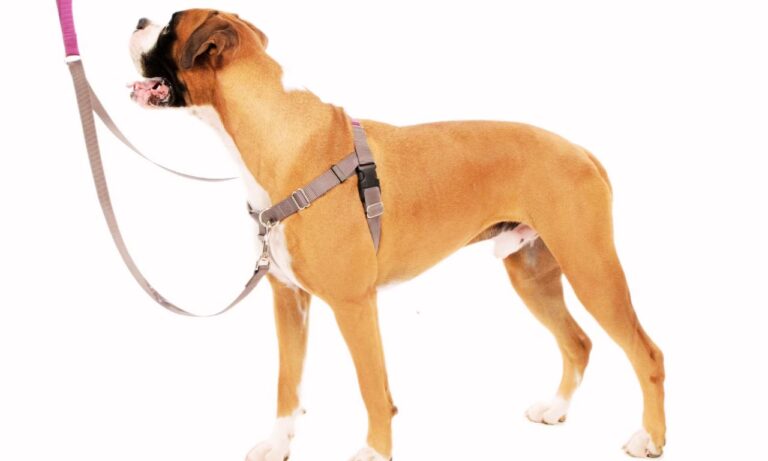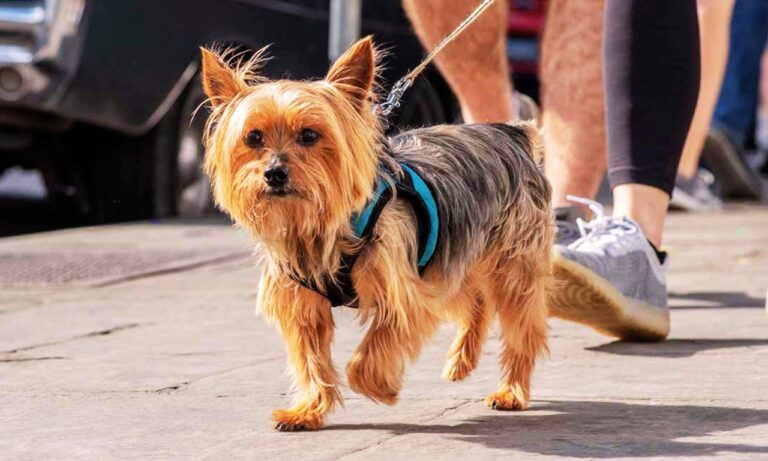Siberian Huskies are captivating creatures. With their thick coats, piercing eyes, and endless energy, they have stolen the hearts of millions. If you’re considering bringing a male Siberian Husky into your life — or you already have one wagging his tail at your feet — one of the first questions you might wonder is: How long is the Siberian husky lifespan male?
In this in-depth guide, we’ll dive into the average lifespan of a male Siberian Husky, the factors that influence it, what to expect as he ages, and how you can give him the longest, happiest life possible.
Discover the benefits of using a harness by reading this guide on should a Collie wear a harness.
Blog Highlights
ToggleWhat Is the Average Siberian Husky Lifespan Male?
Siberian Husky Lifespan Male: The average lifespan of a male Siberian Husky is typically between 12 and 14 years.
Interestingly, male and female Huskies don’t show a huge difference in lifespan. Both genders enjoy relatively long lives for a medium-to-large dog breed. However, subtle factors like size, hormones, and personality can influence how gracefully your male Husky ages.

Here’s a simple breakdown:
- 12–14 years is the standard lifespan for a healthy male Siberian Husky.
- 10–12 years is slightly below average and often linked to health issues or accidents.
- 14–16 years is excellent longevity and often the result of outstanding care and genetics.
It’s not unusual to hear about a male Husky reaching 15 or even 16 years with good care. That’s an impressive age, roughly equivalent to a human living into their mid-70s or early 80s!
Learn if Dachshunds need special collars to provide the right support and comfort for their unique body shape.
Does Gender Affect Husky Lifespan?
While males and females live roughly the same number of years, some subtle differences may affect longevity:
- Size: Male Huskies are typically a little heavier and taller than females. Larger dogs sometimes face slightly more stress on their joints and hearts, potentially impacting lifespan.
- Behavior: Males, especially unneutered ones, are more prone to roaming, fighting, and risk-taking behaviors, increasing the chance of injury.
- Health Risks: Male-specific issues, like prostate problems, can also arise with age if they are not neutered.
However, these differences are very minor. Overall, with proper care, your male Husky can live just as long and happily as any female.
How Male Huskies Age Compared to Humans
To better understand your Husky’s journey through life, it’s helpful to translate his dog years into human years.
Forget the outdated “one dog year equals seven human years” rule. Huskies, like all dogs, mature quickly at first, then age more slowly.

Here’s a Husky male’s age conversion chart:
| Husky Age | Human Equivalent |
| 1 year | 15 years |
| 2 years | 24 years |
| 3 years | 28 years |
| 4 years | 32 years |
| 5 years | 36 years |
| 6 years | 40 years |
| 7 years | 44 years |
| 8 years | 48 years |
| 9 years | 52 years |
| 10 years | 56 years |
| 11 years | 60 years |
| 12 years | 64 years |
| 13 years | 68 years |
| 14 years | 72 years |
If your male Husky lives to 14, that’s the same as a 72-year-old human! Each additional year after that is a major gift worth celebrating. Discover what size collar is best for a French Bulldog puppy to ensure both safety and comfort during their growing stages.
Factors That Influence a Male Siberian Husky’s Lifespan
Life expectancy isn’t just about genetics. Many external factors play a role in how long your Siberian Husky will stay by your side.

1. Genetics
A huge part of your Husky’s health story is written in his DNA. Huskies from responsible breeders — those who screen for genetic disorders — tend to live longer, healthier lives.
If your Husky’s lineage includes dogs who lived 14–15 years, chances are better he will, too.
2. Nutrition
You are what you eat, and the same goes for Huskies. A balanced diet rich in high-quality proteins, essential fatty acids, vitamins, and minerals will help your Husky maintain a healthy weight, strong immune system, and vibrant coat.
Feeding cheap kibble filled with fillers and by-products can shave precious years off his life.
3. Exercise and Mental Stimulation
Male Huskies have boundless energy — if you don’t channel it, they’ll find their own (often destructive) outlets.
Daily vigorous exercise (at least 1–2 hours) and mental challenges (like puzzle toys or obedience training) are critical to a Husky’s health and happiness.
4. Preventive Veterinary Care
Regular vet check-ups can catch hidden issues early. Things like heart murmurs, kidney disease, or thyroid problems can be managed or treated if discovered in time.
Annual blood work, dental cleanings, and vaccinations can add years to your male Husky’s life.
5. Stress and Environment
Dogs who live in stable, loving homes generally live longer. Stress, boredom, loneliness, and frequent environmental changes can negatively impact both mental and physical health.
A consistent, affectionate environment gives your male Husky the best shot at a long, joyous life. Understand if French Bulldogs can wear dog collars and how it affects their neck structure and overall health.
Common Health Issues in Male Siberian Huskies
Although Siberian Huskies are generally healthy, some conditions are more likely to affect males, especially as they age.
1. Hip Dysplasia
Male Huskies tend to be heavier than females, increasing their risk for hip dysplasia, a painful malformation of the hip joints that can lead to arthritis.
Maintaining a healthy weight and providing joint supplements early can help minimize the risk.
2. Eye Problems
Huskies are prone to several inherited eye issues, including:
- Cataracts (cloudy lenses leading to blindness)
- Progressive Retinal Atrophy (gradual vision loss)
- Corneal Dystrophy (cloudy spots on the cornea)
Routine eye exams can help catch and manage these conditions.
3. Hypothyroidism
This occurs when the thyroid gland doesn’t produce enough hormones, leading to weight gain, lethargy, and coat problems.
It’s usually treatable with daily medication once diagnosed.
4. Testicular Cancer (if Unneutered)
Male Huskies who aren’t neutered may face a risk of testicular cancer later in life. Neutering can significantly reduce or eliminate this risk. Explore the best dog collars for French Bulldogs to keep them comfortable while ensuring durability and style.
How to Help Your Male Siberian Husky Live Longer
If you want your Husky to stay healthy and vibrant into his teenage years, there are proactive steps you can take.
1. Quality Nutrition
Feed premium dog food or balanced homemade diets. Avoid excessive carbohydrates and cheap fillers.
A diet rich in omega-3 fatty acids supports heart health, reduces inflammation, and keeps his coat shiny.
2. Maintain a Healthy Weight
Obesity is one of the biggest life-shorteners for Huskies. Keep your male Husky lean and fit with portion control and plenty of exercise.
You should be able to feel his ribs easily (but not see them) when you run your hand over his side.

3. Exercise Daily
Whether it’s running, hiking, biking, or even skijoring (pulling a person on skis!), your Husky needs physical outlets.
Without exercise, Huskies can develop not only health problems but also serious behavioral issues.
4. Vet Checkups Twice a Year After Age 7
Once your male Husky reaches senior status, vet visits every six months (instead of annually) are best.
Bloodwork can monitor kidney, liver, and thyroid health, and physical exams can catch tumors, heart issues, or dental disease early.
5. Mental Enrichment
A bored Husky ages faster. Puzzle feeders, new tricks, scent work, and even canine sports like agility keep his brain sharp.
6. Neuter If You’re Not Breeding
If you don’t plan on responsibly breeding your male Husky, neutering can reduce risks of prostate disease, testicular cancer, and roaming behavior.
7. Emotional Health
Never underestimate the power of love. Huskies bond deeply with their people. Affection, attention, consistency, and kindness are essential ingredients for a long, happy life.
Find the best dog collars for Dachshunds that accommodate their long bodies and prevent strain on their necks.
Signs of Aging in a Male Siberian Husky
Siberian Huskies often retain their playful puppy spirit well into old age. But subtle signs will eventually appear:
- Graying around the muzzle and eyebrows
- Slower movement and longer recovery times after exercise
- Slight hearing or vision loss
- Napping more during the day
- Stiffness when getting up
- Reduced stamina for long runs
Adjusting his lifestyle — gentler exercise, orthopedic beds, and easier-to-chew foods — can help him age gracefully.
Stories of Long-Lived Male Huskies
Many proud Husky owners report their boys living into their mid- or even late-teens!
- Max, a male Husky from Oregon, lived 16 years and 2 months, thanks to a diet of fresh food, daily walks, and lots of puzzle toys.
- Kodiak, a rescue Husky from Montana, celebrated his 15th birthday with a snow hike and a doggie cake surrounded by friends.
These real-life stories prove that with genetics, care, and a little luck, male Huskies can surpass expectations and live beautiful, full lives.
Final Thoughts: Celebrate Every Moment With Your Husky
The average Siberian Husky Lifespan Male is 12–14 years, but that number is just the start. Every day you get with your loyal, goofy, adventurous friend is a gift worth savoring.

By understanding his unique health needs, providing stellar care, and making emotional well-being a priority, you can help your Husky boy reach his fullest potential — living not just long, but well.
Get insights into what is best for Dachshunds: a collar or harness for their safety, comfort, and health during walks.
Because in the end, it’s not just about the years in his life — it’s about the life in his years. 🐾🌙





